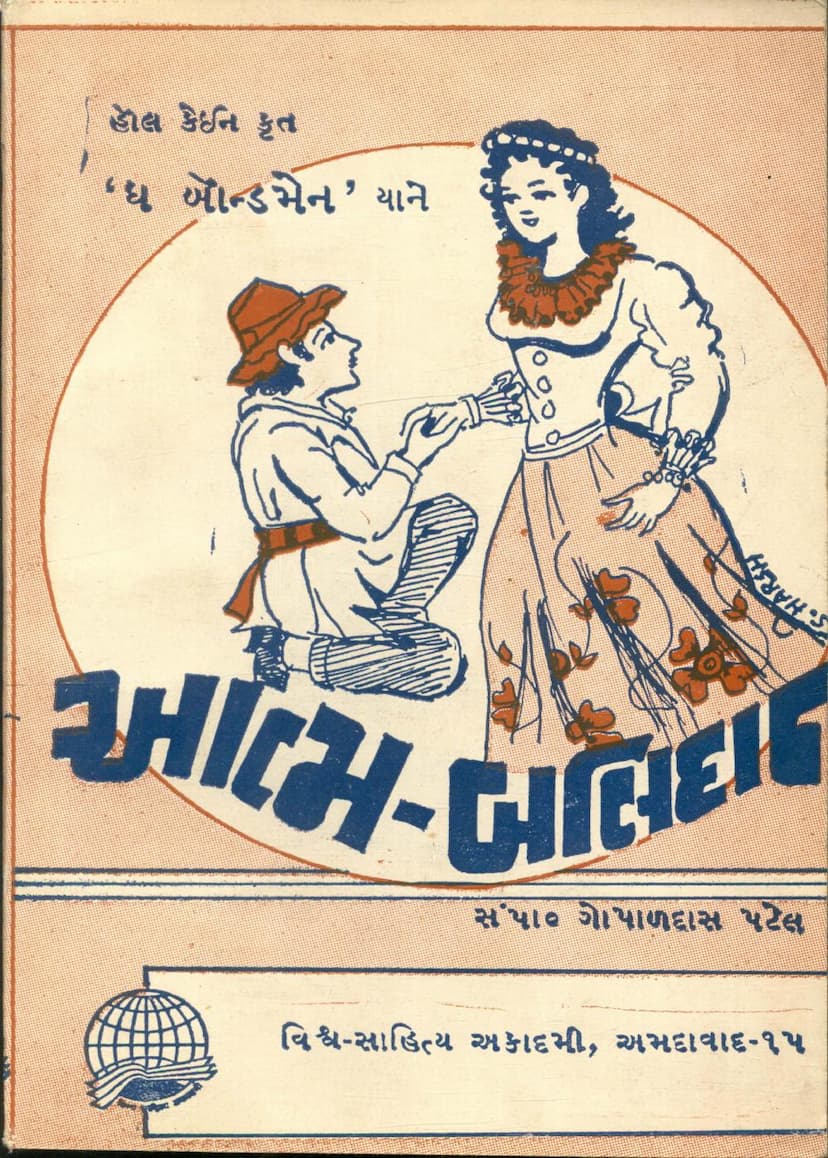Aatmbalidan
Added to library: September 1, 2025

Summary
Here's a comprehensive summary of the Jain text "Aatmbalidan" by Gopaldas Jivabhai Patel, based on the provided pages:
Book Title: Aatmbalidan (Self-Sacrifice) Author: Gopaldas Jivabhai Patel Publisher: Vishva Sahitya Academy Original Work: "The Bondman" by H. Rider Haggard (implied by the Gujarati translation title and themes)
Overall Theme: "Aatmbalidan" is a Gujarati translation and adaptation of H. Rider Haggard's novel "The Bondman," edited and presented by Gopaldas Jivabhai Patel. The core theme of the book revolves around the concept of self-sacrifice (Aatmbalidan) and its profound significance in human life. The narrative, set in the harsh and beautiful landscape of Iceland around the year 1800, explores themes of vengeance, redemption, loyalty, and the ultimate triumph of the human spirit through self-sacrifice.
Key Elements and Summary:
-
Introduction and Context: The initial pages of the book, including statements from the publisher (Vishva Sahitya Academy) and the editor (Gopaldas Patel), emphasize the importance of stories that uplift and ennoble society. Gopaldas Patel expresses his dedication to presenting world literature in Gujarati, highlighting the work of H. Rider Haggard and his own efforts in translating and adapting such significant works. The book is presented as a "Saga," a term usually associated with epic historical narratives, but here applied to a novel that deals with profound human emotions and sacrifices.
-
Setting and Atmosphere: The story is set in Iceland, described as a desolate, harsh, and challenging island in the far north of Europe, characterized by extreme weather, volcanic activity, and vast stretches of ice and lava. Despite these unforgiving conditions, the narrative focuses on the lives and struggles of its inhabitants, highlighting their resilience and inner strength.
-
Plot and Character Introduction:
- The story is described as straightforward, devoid of convoluted plots or excessive sentimentality. Its power lies in depicting the ultimate fulfillment of human life through profound emotional experiences.
- The central protagonist, Jason, is introduced as the son of Stiefen Oury and Rachel. Despite his powerful physique and pure heart, his life is marked by hardship and a quest for vengeance.
- The narrative centers on Jason's desire to avenge his mother, who was wronged by his father. However, his quest for vengeance ultimately leads him to a path of self-sacrifice, which defines his life's purpose and brings it true meaning.
- The text emphasizes that judging life solely by material success or happiness would render the protagonist's life seemingly wasted. However, the opportunity for self-sacrifice, which he seizes, elevates his life to a higher plane of fulfillment.
-
Themes Explored:
- Self-Sacrifice: This is the central theme. The novel illustrates how sacrificing oneself for the greater good or for the well-being of others can lead to a truly meaningful and "blessed" life. The narrative suggests that this act transcends personal gain or status.
- Vengeance vs. Redemption: Jason's initial motivation is revenge against his father, but his journey ultimately leads him to a place of understanding and possibly redemption, where self-sacrifice becomes his defining act.
- Human Emotions: The novel delves into various human emotions, including love (between men and women, fathers and sons, brothers), hatred, and the complexities of relationships. These emotions are presented as universal, transcending geographical and cultural boundaries.
- The Power of Love and Loyalty: The text highlights the depth of love and loyalty that can exist between individuals, particularly in the character of Greba, who is portrayed as exceptionally tender, loving, faithful, and devoted. Her role is crucial in the story, demonstrating the strength and nobility of the female heart.
- Societal Upliftment: The editors and publishers believe that stories like this have the power to elevate society and inspire readers to embrace higher moral values.
-
Narrative Structure: The novel is divided into three parts, suggesting a structured narrative that builds towards a climax and resolution. The detailed character introductions (in Gujarati, alphabetically) further assist the reader in navigating the story.
-
Cultural Relevance: The text asserts that the emotions and human struggles depicted in this Icelandic setting are relevant and relatable to the Gujarati reader, emphasizing the universality of the human experience. It also comments on the changing times and the public's shifting preferences in literature, noting the scarcity of original English editions of Haggard's works.
-
Translator's Perspective: Gopaldas Jivabhai Patel expresses his regret at not being able to present this translated work to his mentor, Shri Vijayashankar Bhatt, during his lifetime, underscoring the personal significance of the translation. He also emphasizes the value of presenting such world literature to the Gujarati audience, suggesting that readers are not solely captivated by contemporary trends.
Key Characters (as mentioned in the text):
- Jason: The protagonist, driven by a quest for vengeance and self-sacrifice.
- Greba: A central female character, described as embodying tenderness, love, loyalty, and steadfastness.
- Stiefen Oury and Rachel: Jason's parents.
- Jorgon Jorgenson: Governor-General of Iceland, described as opportunistic and manipulative.
- Count Trollop: Jorgenson's son-in-law.
- Adam Fairbrother: A deputy governor, known for his honesty and simplicity.
Publisher's Statement and Editor's Note: The Vishva Sahitya Academy (World Literature Academy) is proud to present this work, funded partly by donations and dedicated to promoting quality literature. The publication date is noted as 2-10-1998.
In essence, "Aatmbalidan" is presented as a powerful and emotionally resonant novel that uses the backdrop of Iceland to explore universal themes of self-sacrifice, love, loyalty, and the ultimate triumph of the human spirit over adversity and vengeance.